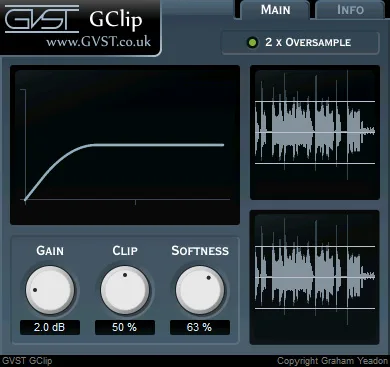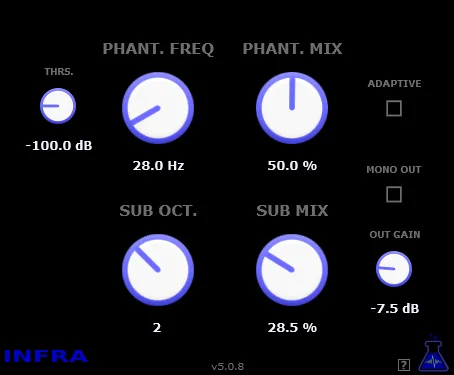GClip: The Essential Clipper for Clean and Powerful Sound
In the world of modern music production, where every decibel counts, controlling the dynamic range is absolutely critical. Signal peaks can easily cause unwanted distortion, especially in the digital realm, where exceeding the 0 dBFS level leads to harsh digital clipping. This is where a clipper plugin, such as GClip from GVST, comes to the rescue – a simple yet highly effective tool for waveform shaping and level limiting.
GClip is designed with one primary goal: to prevent your audio signal from exceeding a set maximum level. This is achieved by “clipping” the peaks of the waveform. Unlike traditional limiters, which may use complex compression algorithms to control peaks, clippers simply truncate the signal, which can lead to the addition of harmonics and a subjective increase in loudness. GClip gives you precise control over this process.
Flexibility and Control
One of the key features of GClip is the ability to choose between “hard-knee” and “soft-knee” clipping. Hard-knee clipping sharply limits the signal, creating more pronounced distortion and a feeling of loudness, which is often used to add aggression or saturation, especially on drums or bass guitar. Soft-knee clipping, on the other hand, gradually limits the signal, resulting in a smoother and less noticeable effect, ideal for mastering or fine peak control.
The plugin offers an intuitive set of controls that allow you to precisely adjust its operation to your needs:
- Graph Display: A visual representation of the clipping curve, showing exactly how the plugin processes the signal depending on its input level. This gives a clear understanding of what’s happening to your sound.
- Wave Display: Displays the waveform of the audio signal in real-time, allowing you to observe the clipping effect directly at the visual level. You see how the peaks are trimmed.
- Gain: Adjustment of the input level before clipping is applied. This allows you to “push” the signal towards the clipping point or, conversely, weaken it.
- Clip: Setting the threshold level above which the signal will be limited. This is your primary control over how strongly the clipper will work.
- Softness: Adjusting the “softness” or “hardness” of the clipping knee. Opens up space for experimentation between clean limiting and creative saturation.
- 2x Oversample: An important feature for improving processing quality. Oversampling helps reduce unwanted aliasing (spurious frequencies) that can occur during non-linear signal processing, such as clipping, making the sound cleaner, especially when the effect is applied strongly.
Application and Compatibility
GClip will find its place in your arsenal during both mixing and mastering. You can use it to:
- Maximize the loudness of the mix without reaching 0 dBFS.
- Give percussive instruments (especially snare drum and kick drum) extra “attack” and presence.
- Add warm harmonic saturation to any instrument or bus.
- Control unpredictable peaks in dynamic recordings.
The GClip plugin is available in VST format, making it compatible with the vast majority of Digital Audio Workstations (DAWs) on the market. It’s important to note its wide cross-platform compatibility: GClip works on Windows (32-bit and 64-bit), macOS, and Linux operating systems, ensuring accessibility for musicians and sound engineers regardless of their software and hardware environment.
Conclusion
GClip from GVST is an excellent example of how a simple tool can be extremely powerful and versatile. It offers the necessary control over peaks and the ability to creatively shape sound using waveform clipping. With flexible knee settings, visual feedback, and the oversampling feature, GClip is a valuable addition to the collection of anyone who wants to achieve a loud, controlled, and pleasing-to-the-ear mix or master. This is a tool that will help your music sound clean, powerful, and professional.



